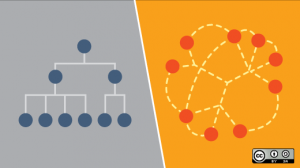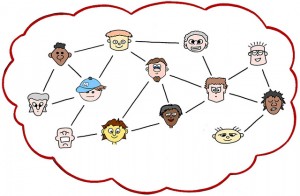As mentioned in “Human Resources, How can we add Value?” we can apply the knowledge of nature’s principles to an organization and learn about its dynamics and how they can impact our HR Strategy and programs.
Let’s look at the second principle: Cycles.
Organizations, like nature, have their own cycles. As Giles Hutchins mentions in “The Nature of Business: Redesigning for Resilience“:
Small, medium or large systems of all shapes and sizes dynamically adapt in the same way. For example, cycles within an economy – boom to bust to boom again. Also, cycles at a product level: a new product release following a new, innovative breakthrough, leading to growth in market share, followed by a period of slower growth, eventual stagnation and decline in market share, then to product expiration and new innovation.”
From a Human Resources perspective, cycles can provide knowledge we can use in different aspects of our strategy. Lets look at some in more detail:
Talent
From the perspective of our talent, looking at what has happened during past cycles can help us identify actions that have been successful and those where we have lost talent we would have preferred to retain. During the last economic crisis, when we had to downsize or restructure, did we lose any talented or high potential employees? Were we able to retain the expertise we needed for when the economy rebounded? Did we panic and laid off employees or closed plants only to find that we needed to hire new ones very soon because the dire predictions ended up not being so bad?
If we analyze how we answered the questions above, we might decide to do things differently. We might want to carefully identify the experts and high potential employees and redeploy them to different areas or assign them to special projects. In our factories, we might decide to go to a reduced hours workweek instead of laying off employees that know the job well. This has many benefits: employees will tend to be grateful because they still have income and benefits and as soon as we need to start producing again all we need to do is to let people know and get the production plan running. In addition, we forego the loss of time and the expense of having to hire new employees and train them.
Workforce Planning
Analyzing past cycles can also help with our workforce planning. Although no two cycles will necessarily impact the organizational needs in the exact same way, we can have better projections based on how things worked out in the past. For example, if we look at the workforce requirements when we introduced a new technology, it might provide us with important insight as to which questions to ask and how to plan for the next technology development.
If during the past economic crisis we reduced the workforce and then found that we had to scramble to find the right people to hire because we had gone too far, this is important information to bear in mind and challenge the organization on how to tackle the crisis. The short term savings of reducing our organization might be overshadowed by the cost of rehiring and loss of productivity.
An analysis of how employees nearing retirement age reacted during an upward cycle in the past might raise a red flag if they tended to retire early. If we are again in an upward trend and have a significant number of key employees that could take early retirement, we need to start planning what to do.
Organizational Design
How did we redesign the organization to tackle a downward trend? Did it work? If it did, then we want to pay attention to why and see if this time there are similar factors in play. If it didn’t, we need to figure out what went wrong and learn from it.
What did we do when we were in a growth cycle? Are we sure we were able to achieve the most out of the opportunity or did the design of the organization somehow create roadblocks to the innovation or cross business unit potential?
I guess you can see what I mean with these examples. Although we need to look towards the future and make sure that our HR Strategy is aligned with the Business Strategy, looking back and reviewing how the organization reacted during each cycle can provide us with valuable information that we can use to make sure our efforts will help the business achieve the best results possible.



